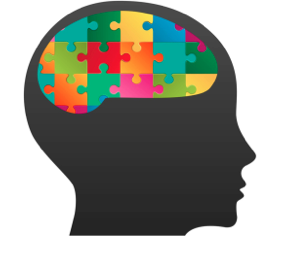Blog

New Breakthrough Made in Autism Research
 New research reveals that brain-chemical imbalance increases the symptoms of autism. This study was supported by a Milton Fund grant from Harvard University, a Seed Grant from the Simons Center for the Social Brain at the Massachusetts Institute of Technology, and an MIT-Mass General Hospital Grand Challenge Award. According to recent research, a direct link between the symptoms of autism and brain levels of the neurotransmitter gamma-aminobutyric acid (GABA) has been found. The question you may have is, “What’s GABA? How does it work in our bodies?” GABA is crucial to the human body and is responsible for reducing excitability levels throughout the nervous system. Without enough GABA in our body, neurons will fire too easily and too often. Excessive GABA levels often cause anxiety, a trait that individuals with autism often exhibit. “Often, people with autism have trouble filtering irrelevant sensory information, and it’s long been thought this might have something to do with inhibition in the brain,” says study leader Caroline Robertson, a researcher with the Harvard Society of Fellows, in Cambridge, Mass. Therefore, high levels of GABA contribute to difficulty filtering and processing various stimuli.
New research reveals that brain-chemical imbalance increases the symptoms of autism. This study was supported by a Milton Fund grant from Harvard University, a Seed Grant from the Simons Center for the Social Brain at the Massachusetts Institute of Technology, and an MIT-Mass General Hospital Grand Challenge Award. According to recent research, a direct link between the symptoms of autism and brain levels of the neurotransmitter gamma-aminobutyric acid (GABA) has been found. The question you may have is, “What’s GABA? How does it work in our bodies?” GABA is crucial to the human body and is responsible for reducing excitability levels throughout the nervous system. Without enough GABA in our body, neurons will fire too easily and too often. Excessive GABA levels often cause anxiety, a trait that individuals with autism often exhibit. “Often, people with autism have trouble filtering irrelevant sensory information, and it’s long been thought this might have something to do with inhibition in the brain,” says study leader Caroline Robertson, a researcher with the Harvard Society of Fellows, in Cambridge, Mass. Therefore, high levels of GABA contribute to difficulty filtering and processing various stimuli.
The experimental design consisted of 41 participants, 21 were mildly to severely affected by autism, and 20 were unaffected by the condition. Two tasks were completed for the purposes of this study. The first task involved inhibition of brain responses. The participants were instructed to look through binocular lenses that displayed a different image to each eye. “Typically, the brain switches between focusing on one or the other of the two images. This requires the brain to suppress one image.” Results of this task revealed that the 21 participants with autism took more time to distinguish between the two images than were the participants unaffected by the condition. This reflects the notion that individuals with autism have difficulty with blocking out distracting sights, sounds or other sensory input.
The next task involved, magnetic resonance spectroscopy to measure GABA levels in each participant’s brain. In the group of participants without autism, their abilities to suppress the competing image increased in direct proportion to GABA levels in their brains. On the other hand, in participants with autism, GABA levels did not change in proportion to test performance. Dr. Robertson stated, “This shows that the link between GABA and the ability to suppress competing images is completely absent in autism.”
This ground-breaking research may support the use of medication to increase GABA signals within the brain. Future medications may help to inhibit symptoms that occur in individuals with autism.
For further information on this ground-breaking research, you can visit www.autismspeaks.org
Alexis Granger M.A. CF-SLP TSSLD




